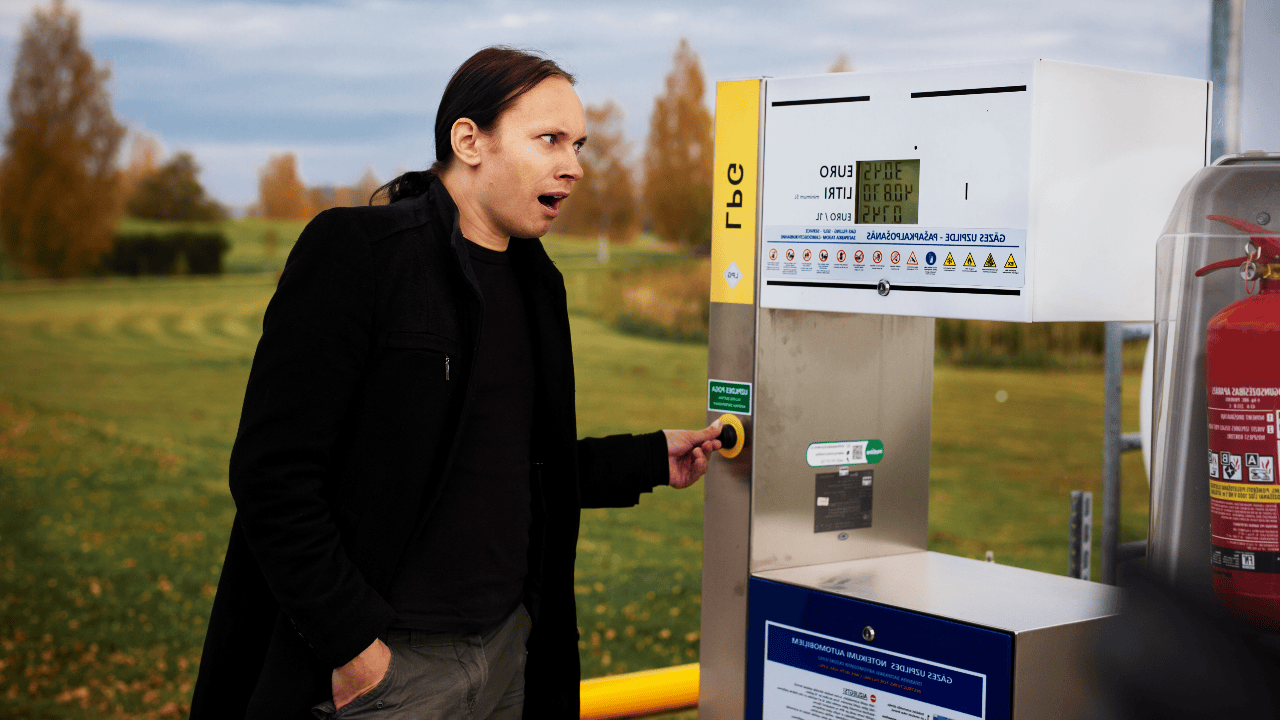
Introduction: Understanding the Rise in Gas Prices
In recent times, a common question on everyone's mind is, "Why are gas prices going up?" The surge in gas prices has become a hot topic of discussion, affecting budgets and daily routines. This rise is not just a number on a sign; it reflects a complex web of factors including oil prices, gasoline prices, and the intricate dynamics of crude oil markets. High gas prices are more than an inconvenience; they are a window into the global economic and geopolitical landscape. Understanding why gas prices are climbing is crucial for consumers and businesses alike. In this article, we delve into the various elements that contribute to these increasing costs, shedding light on the reasons behind this upward trend. Let's embark on a journey to demystify the high gas prices that are impacting wallets worldwide.
Join our newsletter
Stay on top of the latest in landscaping and lawn care with one valuable tip right in your inbox every Saturday morning.
Why Are Gas Prices Going Up?
Some Main Factors That Influence Prices
The ascent of gas prices is not attributed to a single cause but a constellation of interconnected factors. Among the main factors influencing this rise is the fluctuating dynamics of oil production. Changes in crude oil supplies, often dictated by global events and decisions of petroleum exporting countries, play a significant role. When these countries adjust their production levels, it immediately impacts crude oil availability, leading to higher oil prices.
The mechanism behind gas prices rise is deeply rooted in the supply-demand equation of the oil market. In periods where production is reduced or demand surges unexpectedly, a squeeze on supplies ensues, pushing prices upward. This delicate balance is constantly influenced by geopolitical shifts, economic policies, and even natural events, all contributing to the complex landscape of gasoline pricing. Understanding these factors helps in grasping why gas prices vary and why they are currently on an upward trajectory.
Global Influences on Gas Prices
Russia-Ukraine War
Crude Oil Prices
The global market for oil, a key component in gasoline production, is highly sensitive to international events. The Russia-Ukraine conflict exemplifies how geopolitical tensions can dramatically influence crude oil prices. As nations respond to the crisis with sanctions and trade adjustments, the stability of oil supplies is disrupted, leading to increased prices globally.
Furthermore, the role of crude oil in this scenario cannot be understated. As a primary fossil fuel, its price is a cornerstone in determining gasoline costs. Factors like the production policies of major oil-producing nations, including the influence of Iranian oil, play a crucial role in setting these prices. These elements collectively paint a picture of the global markets' impact on gas prices. As the world grapples with these ongoing conflicts and their repercussions, the volatility of crude oil prices remains a significant driver behind the rise in gas prices.

Regional Variations in Gas Prices
Why Do Gasoline Prices Differ Regionally?
Which States Have the Highest and Lowest Gas Prices?
A notable aspect of gasoline pricing is its regional variation. Gasoline prices can differ significantly from one region to another, often influenced by factors such as local taxes and the cost of transporting fuel. States closer to refineries and oil distribution centers typically enjoy lower prices per gallon due to reduced transportation costs. Conversely, regions further from these hubs bear higher prices.
The states with the highest gas prices often have additional factors at play, like stringent environmental regulations and higher state taxes, which add to the per gallon cost. On the flip side, states with the lowest gas prices usually benefit from lower local taxes and proximity to gasoline production facilities. This variation is also evident in the pricing of gasoline sold within states, where urban and rural areas may show different pricing patterns due to distribution logistics and competitive market forces.
The Impact of Conflicts on Oil Prices
HOW HIGH COULD OIL PRICES GO?
How will the Israel-Hamas War Affect Gas Prices?
Conflicts, both regional and global, have a direct and profound impact on oil prices. In scenarios like the Israel-Hamas conflict, the uncertainty and regional instability can lead to speculation about supply disruptions, influencing global oil and fuel prices. The question, "How high could oil prices go?" becomes pertinent in such situations.
The effects of such conflicts often extend beyond the immediate region. For instance, the involvement or response of major oil-producing countries like Saudi Arabia can significantly alter the dynamics. Additionally, strategic decisions, such as the release of reserves from the Strategic Petroleum Reserve, can be employed to stabilize or reduce oil prices. These responses are crucial in moderating the average price of oil on the global market, which in turn affects gas prices around the world. The interconnected nature of global politics and energy markets means that regional conflicts can have wide-reaching implications on fuel costs.

Economic Implications of Rising Gas Prices
WHAT'S THE IMPACT ON CONSUMERS?
WHY HAVE OIL PRICES RISEN?
The surge in gas prices has tangible economic implications, particularly for consumers. As gas prices climb, the cost of commuting, travel, and transportation of goods increases. This uptick often leads to higher prices in other sectors, contributing to overall inflation. Consumers find themselves adjusting budgets to accommodate these higher costs, impacting consumer finance and economic growth.
The question of why oil prices have risen is central to this discussion. Factors include increased global demand, production cuts by major oil-producing countries, and geopolitical tensions. These elements combine to create a scenario where the supply of oil struggles to meet demand, pushing up the price of gas. This scenario illustrates the intricate link between oil prices and broader economic trends, showcasing how changes in the energy sector can ripple through economies worldwide, affecting everything from the price of gas to general consumer expenses.
Join our newsletter
Stay ahead of the curve in all things outdoor.
Get the inside scoop on the latest landscaping, lawn care, and fencing trends with 1 actionable tip every Saturday morning.
Understanding Retail Gas Prices
Retail Competition and Operating Costs
Gasoline Inventories and Price Moderation
Retail gas prices are not just a reflection of crude oil costs but also encompass a range of other factors. Key among these are the operating costs of gas stations, including transportation and refining costs. These expenses vary based on location, affecting the price at the pump. Additionally, competition among local gas stations can also influence retail prices, with higher competition often leading to lower prices for consumers.
Another significant factor in retail gas pricing is the status of gasoline inventories. When inventories are high, it indicates an adequate supply to meet demand, which can help moderate prices. Conversely, low inventory levels, often due to production or supply chain disruptions, can lead to higher prices as the market reacts to a potential shortage. Therefore, the balance of supply and demand, along with operational expenses, plays a crucial role in determining the retail price of gasoline.
Environmental and Geographical Factors
Environmental Programs and Costs
Distance From Supply and Price Differences
Environmental regulations and programs significantly influence the cost of gasoline. Areas with stringent environmental standards often require specific processing technologies and cleaner fuel formulations, which can increase production costs. This is particularly evident in regions with relatively few refineries that are equipped to meet these standards, leading to higher prices per gallon.
Geographical factors also play a crucial role in gas pricing. The distance from supply points, like refineries and distribution centers, notably impacts the cost. For example, prices tend to be higher in regions far from the Gulf Coast, where a significant portion of the U.S. refining capacity is located. The further gasoline has to travel, the more transportation costs are factored into the final price at the pump. This geographical reality creates a natural variance in gas prices across different regions.

Strategies to Mitigate High Gas Prices
How to Save Money on Gas (Despite High Prices)
Join Gas Rewards and Cash-Back Programs
Save More. Spend Better. Budget Confidently
In the face of high gas prices, there are several strategies consumers can employ to mitigate the impact on their finances. One effective way to save money is by participating in gas rewards and cash-back programs. Many fuel stations, credit card companies, and retail chains offer programs that provide discounts or points for every gallon purchased, translating into significant savings over time.
Adopting smart driving habits and vehicle maintenance can also contribute to fuel efficiency, helping to stretch each gallon further. Planning routes to reduce unnecessary driving, carpooling, and using public transportation when possible are practical steps to save money on gas.
For those seeking more comprehensive financial strategies, consulting with a consumer finance expert can be beneficial. They can provide tailored advice on budgeting and spending, helping individuals and families navigate the challenges of fluctuating fuel costs with confidence. By adopting these measures, consumers can better manage their fuel expenses and reduce the financial strain of high gas prices.

Conclusion: Navigating Through High Gas Prices
As we've explored, the reasons behind the rise in gas prices are multifaceted and complex, encompassing global events, regional policies, and economic forces. Understanding these factors—from the influence of international conflicts to the impact of environmental programs—helps us navigate these high prices with more insight. The economic implications of these rising costs affect consumers and industries alike, echoing through various aspects of daily life. While we may not have control over the global market or geopolitical events, strategies like utilizing gas rewards programs and adopting fuel-efficient practices empower us to mitigate the impact on our personal finances. The journey through understanding and adapting to high fuel costs is challenging, but armed with knowledge from industry experts and data from sources like the Energy Information Administration, we can make informed decisions and adjust our habits accordingly. In a world where the price of gasoline remains a crucial factor, staying informed and adaptable is key to navigating this ever-changing landscape.
Join our newsletter
Stay ahead of the curve in all things outdoor.
Get the inside scoop on the latest landscaping, lawn care, and fencing trends with 1 actionable tip every Saturday morning.